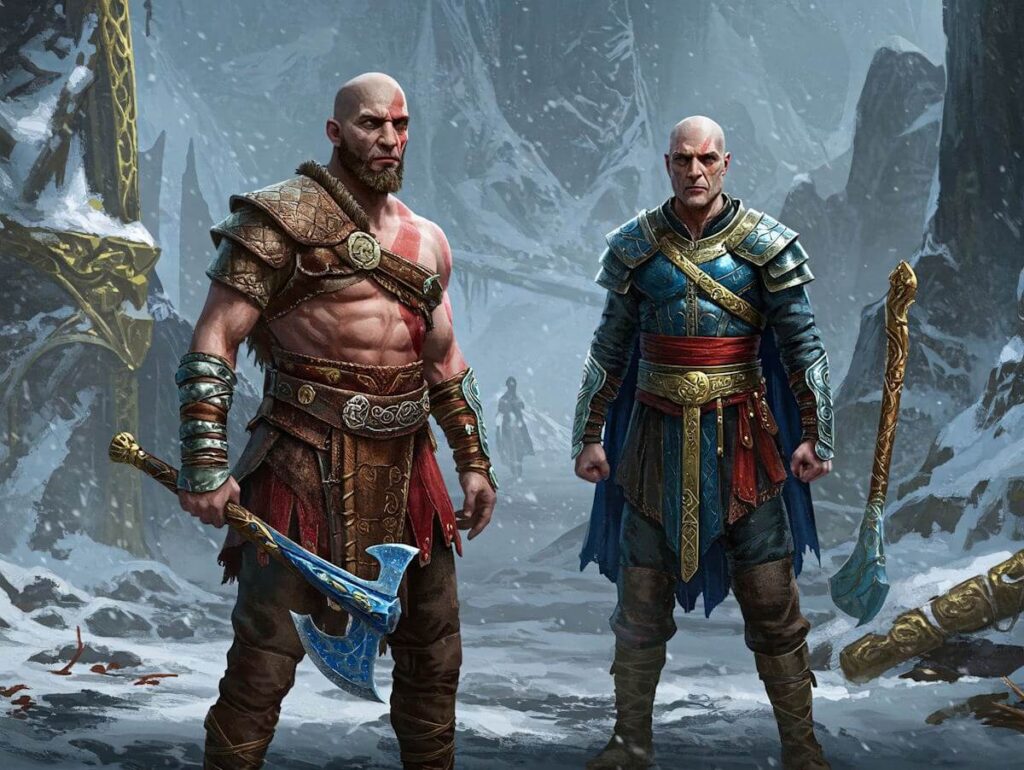Dark Souls III, released in March 2016, stands as a significant installment within the acclaimed Dark Souls franchise, developed by FromSoftware. This action role-playing game has garnered immense attention and respect in the gaming community, often cited as a benchmark in game design and storytelling. As the concluding chapter of the series, Dark Souls III encapsulates the essence of its predecessors while introducing innovative elements that enhance the overall gameplay experience.
Set in the desolate kingdom of Lothric, players navigate a world filled with peril, lore, and intricate environments. The atmosphere is heavily imbued with themes of decay, resurrection, and the cyclical nature of existence, which resonate deeply with the overarching narrative of the franchise. Dark Souls III invites players to explore a beautifully crafted world where every corner tells a story, and each enemy encounter demands strategic thinking and skillful execution.
The gameplay mechanics reinforce the series’ trademark difficulty, offering a challenging yet rewarding experience. Players must engage in precise combat, mastering timing and tactics to overcome formidable foes and intricate bosses. The introduction of new features, such as the “Estus Flask” system, enhances healing management, encouraging players to adapt their strategies dynamically. Additionally, the presence of the “Ashes” mechanic allows for customization of playstyles, further deepening the game’s complexity.
Critical reception of Dark Souls III has been overwhelmingly positive, with critics praising its polished gameplay, artistic direction, and compelling narrative. The game successfully pays homage to its lineage while delivering fresh experiences, making it a fitting finale to the series. As players delve into the challenges of Lothric, they encounter an emotional journey, solidifying Dark Souls III as the perfect farewell to a legendary series.
The Legacy of the Dark Souls Series
The Dark Souls series, developed by FromSoftware, has created a lasting impact on the gaming industry since its inception with Demon’s Souls in 2009. This action role-playing game introduced players to a challenging and immersive world that prioritized skill and strategy over hasty button-mashing. Its spiritual successors, Dark Souls, Dark Souls II, and finally Dark Souls III, built on this foundation, evolving a unique gameplay experience that has not only captivated players but also inspired an entire genre of games often referred to as ‘Souls-like.’
The introduction of interconnected worlds, intricate lore, and punishing difficulty levels established a distinct identity for the series. Dark Souls III, released in 2016, served as the culmination of this design philosophy, bringing together many gameplay elements that fans had come to cherish throughout the franchise. With each installment, the series refined its mechanics, integrated the concept of risk and reward, and emphasized the importance of exploration and environmental storytelling.
One of the significant contributions of the Dark Souls series is the way it has shaped game design philosophies. Developers have increasingly adopted its challenge-driven approach, incorporating elements such as deliberate pacing, minimal handholding, and cryptic narratives into their titles. The rise of ‘Souls-like’ games is a testament to this influence, with developers seeking to replicate the intricate mechanics and deep lore that characterize the series. Games like Bloodborne and Nioh owe much of their success to the standards set by the Dark Souls franchise.
Key moments from previous titles, such as the iconic boss battles and environmental storytelling in Dark Souls, cultivated a sense of expectation for Dark Souls III. Players anticipated a compelling narrative conclusion, with familiar themes of cyclical fate and the struggle against despair. The series not only challenged players but also fostered an engaged community, further solidifying its legacy within gaming culture.
A Return to Lothric: Setting and Atmosphere
The world of Dark Souls III, specifically the kingdom of Lothric, serves as a formidable backdrop that encapsulates the series’ signature themes of despair and perseverance. This carefully crafted environment is a testament to the developers’ commitment to delivering an immersive experience marked by intricate artistry and thoughtful design choices. The atmospheric storytelling succeeds in drawing players into Lothric’s haunting landscapes, where each area resonates with a palpable sense of history, reminiscent of the previous titles in the franchise.
Upon entering Lothric, players are greeted by a diverse range of environments, from the towering castle spires to the decaying ruins that hint at the kingdom’s former glory. This interconnected level design encourages exploration, allowing players to navigate through familiar gameplay elements while discovering new secrets that deepen the lore of the Dark Souls universe. Each zone within Lothric is not merely a setting; rather, it reflects the overarching narrative of decay and the cyclical nature of life and death that has characterized the series for years.
Lothric’s atmosphere is undeniably intense, with ominous weather patterns and ambient sounds compounding the feeling of isolation. The distillation of despair permeates the air and is illustrated by the remnants of defeated foes and tormented souls scattered throughout the realm. While navigating these harrowing environments, players frequently encounter remnants of previous games, fostering a profound sense of nostalgia and connection to the entire series. This intricate tapestry of interwoven themes invites players to reflect on their own perseverance as they confront the trials set before them.
Ultimately, Lothric not only functions as a compelling setting but also as an integral part of the game’s emotional core, reinforcing the series’ enduring legacy. Through its meticulous design and atmospheric depth, Dark Souls III presents a world that feels alive, a fitting farewell that masterfully encapsulates the journey undertaken throughout the franchise.
Character and Storytelling
Dark Souls III serves as a poignant conclusion to the intricate web of character arcs and storytelling established in the earlier installments of the series. Each character introduced throughout the game has specific ties to previous entries, enriching the overall narrative experience and providing players with a bittersweet sense of closure. The game meticulously weaves together the threads of fate and destiny, linking protagonists and antagonists in a way that highlights their shared struggles against the backdrop of a dying world.
The lore of Dark Souls III operates as a narrative device that deepens the player’s connection to the characters. Each individual is layered with history, motivations, and moral dilemmas that echo throughout the saga. For instance, the presence of familiar figures and locations evokes nostalgia while simultaneously exploring the evolution of their roles within the ongoing narrative. This intentional continuity fosters a thematic resonance, pushing the player towards reflection on the broader implications of their choices and actions across the series.
Moreover, Dark Souls III successfully ties up numerous character arcs that have been cultivated over the years. The resolution of these stories not only advances the personal narratives of the characters but also serves to underscore the overarching themes of sacrifice, ambition, and redemption. Through poignant exchanges and impactful encounters, players witness how the legacies of past heroes and villains culminate in this final chapter. This delivers a profound sense of finality while still inviting contemplation about the cyclical nature of the world built within the Dark Souls universe.
Ultimately, Dark Souls III masterfully encapsulates the franchise’s enduring legacy by honoring its rich character tapestry. The culmination of their stories offers a meaningful farewell, encapsulating the essence of what makes the series beloved among its community. The game does not just conclude a series; it encapsulates an entire experience marked by memorable characters and evocative storytelling.
Gameplay Mechanics: Evolution and Refinement
The gameplay mechanics in Dark Souls III represent a culmination of the various principles established in its predecessors while introducing innovative refinements that enhance player experience. At the heart of this installment lies a combat system that emphasizes both precision and strategy. Players are encouraged to master a varied range of weapons, each with unique movesets, allowing for customizable combat styles. This evolution from previous titles introduces new mechanics such as weapon arts, which grant players special abilities that can change the tide of battle. These techniques require stamina management, driving home the necessity for resource allocation during encounters.
Magic plays a significant role in Dark Souls III, yet it has evolved from the iterations seen in earlier games. The introduction of the “focus points” system allows for a more balanced approach to spellcasting. Players can choose to integrate sorceries, miracles, and pyromancies effectively. This not only preserves the strategic element of magic but also intertwines it seamlessly within melee combat, creating a versatile gameplay experience. The diversity of spells offers players the opportunity to experiment, encouraging a play style that best suits individual preferences, whether they favor melee engagements or long-range tactics.
Moreover, the leveling structure in Dark Souls III has been meticulously designed to promote rewarding character development. Players can allocate points into various attributes, tailoring their build to specific play styles. Unlike earlier titles, where certain classes could feel restrictive, the refined system allows for hybrid builds that offer greater flexibility. This levelling mechanism contributes significantly to player satisfaction, as it respects individual choices and strategy while challenging players to think critically about their character progression. Thus, Dark Souls III not only builds upon its storied heritage but also refines it, delivering an unparalleled gameplay experience that defines the series.
Boss Design and Encounters: A Fitting Challenge
Dark Souls III is renowned for its meticulously crafted boss designs and encounters, which exemplify the franchise’s dedication to challenge and reward. Each boss serves not only as a formidable opponent but also as a narrative device, contributing significantly to the overarching themes and lore of the game. The careful attention to detail in their aesthetic, abilities, and backstories elevates these encounters beyond mere obstacles, transforming them into memorable experiences.
Take, for instance, the encounter with the Abyss Watchers. This boss not only showcases intricate design with their distinctive appearance and fluid combat mechanics but also embodies the theme of conflict and corruption within the game’s lore. The fight itself is multi-layered; players must navigate the frenetic movements of several enemies while interpreting their actions as a representation of the eternal struggle against the Abyss. Such design complexity not only heightens the gameplay experience but also reinforces the series’ enduring motifs.
Moreover, bosses like Iudex Gundyr demonstrate the gradual escalation of difficulty that the Dark Souls series is known for. Players are thrust into an encounter that tests not just skill but adaptability, demanding an understanding of the boss’s patterns and the environment. With every failure, players learn, and with each victory, a sense of accomplishment is deeply felt. This cycle of trial and error is crafted into every boss design, serving as a testament to the game’s commitment to challenging its audience.
In essence, the boss encounters in Dark Souls III encapsulate the very essence of the series, presenting players with beautifully designed foes that serve as both thematic elements and formidable challenges. As players engage with these encounters, they experience not only the thrill of battle but also the rich tapestry of storytelling that has become synonymous with the Dark Souls franchise.
Multiplayer Elements: Community and Legacy
The multiplayer aspects of Dark Souls III play a crucial role in shaping the community and legacy of this iconic series. Players can engage in cooperative gameplay, seamlessly joining forces with others to confront the many challenges that the game presents. This co-op experience not only facilitates tackling formidable bosses and intricate levels but also fosters lasting relationships among gamers. The ability to summon companions for assistance reflects a core ethos of camaraderie, which has resonated deeply within the Dark Souls community.
In addition to cooperative play, Dark Souls III introduces the thrilling element of invasions, where players can invade one another’s worlds—creating a sense of urgency and excitement. This mechanic emphasizes not just individual skill, but also the unpredictability of encountering another player. Invasions can be viewed as a bittersweet farewell, encapsulating the overarching themes of the series: triumph through adversity, and the ever-present danger brought forth by the unknown. These interactions galvanize the sense of community while extending the life of the game, as players often share these distinct experiences with one another across platforms and social media.
The multiplayer features—both cooperative and competitive—contribute significantly to the lasting legacy of Dark Souls III. Each engagement serves as a reminder of the commitment required to succeed both alone and with others. As players navigate the treacherous landscapes of Lothric, they create stories and memories that transcend the gameplay itself, further solidifying the franchise’s community-oriented ethos. By entwining cooperation and competition, Dark Souls III leaves behind a rich tapestry of multiplayer experiences, ensuring that its influence will endure in the hearts and minds of players long after they have bid farewell to the series.
Thematic Exploration: Life, Death, and Rebirth
Dark Souls III presents an intricate tapestry of themes, notably revolving around the concepts of life, death, and rebirth. These philosophical elements are not merely superficial; they permeate the gameplay mechanics, narrative arcs, and the environment itself, enriching the player’s experience and prompting profound reflection. The very nature of the game is encapsulated in the struggles against an array of formidable foes, which symbolizes the trials of existence and the inevitable confrontation with death.
In the world of Dark Souls III, death serves as both a mechanic and a metaphor, representing not the end, but rather a catalyst for rebirth. Player characters face numerous challenges that lead to their demise; however, each death is not an insurmountable obstacle but a means to grow stronger through the accumulation of knowledge and experience. This cycle of death and resurrection invites players to understand the fragility of life and the resilience necessary to endure in a world fraught with despair.
The design of environments also reflects these themes, with locations that embody decay and renewal. Players traverse ruined landscapes, remnants of civilizations that have succumbed to the passage of time yet still hold whispers of what once was. The stark contrasts between deathly desolation and fleeting moments of beauty foster an appreciation of life, reinforcing the idea that even in darkness, there exists the potential for rebirth.
Furthermore, narrative elements intertwine the themes of life and death through character relationships and their fates. Each encounter reveals layers of emotional depth, illustrating how the cycle of life, fraught with suffering and struggle, ultimately shapes the journey of each character. Through these thematic explorations, Dark Souls III transcends mere gameplay, engaging players in a philosophical dialogue about existence, urging them to confront the profound questions of mortality and the quest for meaning. The culmination of these themes not only enriches the game’s narrative but also evokes a resonating emotional response, solidifying its place as a worthy chapter in this legendary series.
Concluding Thoughts: The End of an Era
The conclusion of Dark Souls III marks a significant milestone not only for the game itself but for the entire Souls series. It is essential to acknowledge the emotional resonance that accompanies the farewell to a franchise that has profoundly influenced the gaming landscape. As the final installment, Dark Souls III encapsulates the core themes that have defined the series: resilience, exploration, and the cyclical nature of life and death. Each encounter and each setback experienced within the game serves as a testament to the arduous journey players undertake, mirroring the very essence of the Soulsborne experience.
This title distills the franchise’s hallmark mechanics and intricate storytelling into a cohesive narrative that feels like a proper closure. The weight of every decision in Dark Souls III is accentuated by the overarching theme of sacrifice and the inevitable decay of existence, themes that resonate deeply with its dedicated player base. The concluding narrative ties back to its predecessors while offering a unique reflection on the duality of hope and despair, a balance that has kept players engaged and invested in this intricate world.
In summary, Dark Souls III stands as a powerful conclusion to a legendary series, emphasizing its relevance and influence in the realm of video games. The emotional weight of this farewell is felt deeply among fans, encapsulating the essence of a world that has captivated hearts and minds. As players bid adieu to this beloved universe, they carry with them the invaluable lessons learned and unforgettable experiences shared, ensuring that the legacy of Dark Souls continues to resonate for years to come.





